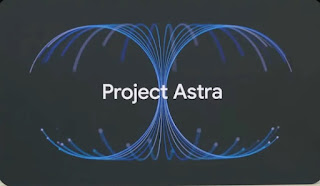Drone Inspections
Drone Inspections: The Future of Safety and Maintenance
Drone
Drone, Unmanned aerial vehicles (UAVs) are aircraft which is accessed remotely. They are inbuilt with the latest technology which Camera, GPS tracker, Sensor, radio transmitter, Electronic Speed Controller, and batteries. The drone is used to monitor the field and send the report to the user through the application.
Drone Inspection:
Drone which involves solar farm inspections for performing the visual checking and collecting every panel’s data for maintenance needs. The purpose it increases the efficiency and identity the defects in the solar girds. The drone is operated remotely which makes the inspection much easier and captures the defective panel through a thermal camera.
Inspection can be done without the need to shut down solar panel operations. Drone cameras can identify the defects in particular girds, temperature variation, and essential maintenance for optimizing the performances. Using the drone mapping feature the drone can be programmed and this allows for monitoring each gird and spotting cell data.
Accuracy & Cost:
Speed up and Accuracy is the main aspect where drones are used for solar farm inspection at any cause. Capturing high-resolution images and videos of solar panels which make the identification process easy and spot minor defects.
Cost is a major issue that every
solar farm gets affected and lack of maintenance leads to a shortage the power
production. So to make the aerial maintenance simple and cost effective the
drone is used for surveillance.
The drone can travel to a certain
altitude or height which can cover the entire solar farm in a single picture.
The visual inspection makes the identification simple by taking high-resolution
images frequently. Combining the image with more clarity will help to spot the
defect manually. Some major defects are cracks, dirty settlement, shading, and temperature
differential and cable connections.
A thermal camera is used on a drone
for capturing the solar farm and spots the temperature variation. In addition,
it can able to identify the hotspots of the panel and indicate the cell defect
and wiring issue.
The drone is operating through a wireless remote controller, which makes the inspection much easier. And the 3d mapping technology can be used to assign the flight direction and distance that are needed to cover. Depending on the solar farm size the flying route are assigned. Capturing multiple pictures at the same for identifying potential problems with the layouts.
Reduced risk:
Drones can fly in and around the solar panel also they can get closer enough to solar panels that humans can't reach. This type of functionality will help to reduce the human damage the solar panels. And it reduces the cost of damage and repairs.
Data Collection & Storage:
With a single flight, the drone can
able to collect information about the solar panel. It helps and gives technical
personnel to analyze every solar panel grid easily. Drones capture
high-resolution images which results in the image size being larger enough.
With high storage capacity, the image is stored and it transmits the collection
data to the user.
Centralized Platform:
The collected data are stored securely and are easy to access by the user while inspection. With the drone application the drone flight duration, site planning, survey programs, and project management are operated. The operation is concluded in an automated report with every detail enclosed. Real-time data are fetching frequently for improvement and transparency
ROI:
The solar farm is a renewable energy resource for producing electricity in a feasible and pollution-free manner. Investing in solar panels and solar farms will deliver profit for up to 10 years. On an average of 10% to 20% solar farm pays off. Based on the size and latest technology the solar panel can able to produce electricity.
Some of the major factors that impact the ROI:
- Placement and Size of the solar farm
- Panel types
- Climate conditions and terrain
- Installation cost
- Grid proximity
Summary: Using the drone for inspecting the solar farm will be
cost-effective and no human damage. The drone can able to frequently by
replacing batteries. Also, it can identify the defect and details in a
reporting manner to the user. Automation can be done easily for flight duration
and inspection through drone applications.



Comments
Post a Comment